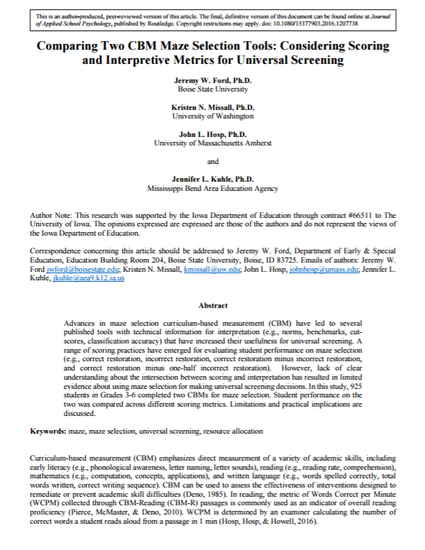
Advances in maze selection curriculum-based measurement (CBM) have led to several published tools with technical information for interpretation (e.g., norms, benchmarks, cut-scores, classification accuracy) that have increased their usefulness for universal screening. A range of scoring practices have emerged for evaluating student performance on maze selection (e.g., correct restoration, incorrect restoration, correct restoration minus incorrect restoration, and correct restoration minus one-half incorrect restoration). However, lack of clear understanding about the intersection between scoring and interpretation has resulted in limited evidence about using maze selection for making universal screening decisions. In this study, 925 students in Grades 3-6 completed two CBMs for maze selection. Student performance on the two was compared across different scoring metrics. Limitations and practical implications are discussed.
This is an Accepted Manuscript of an article published by Routledge an imprint of Taylor & Francis Group in Journal of Applied School Psychology on October 4, 2016, available online at: 10.1080/15377903.2016.1207738
Available at: http://works.bepress.com/jeremy_ford/8/
